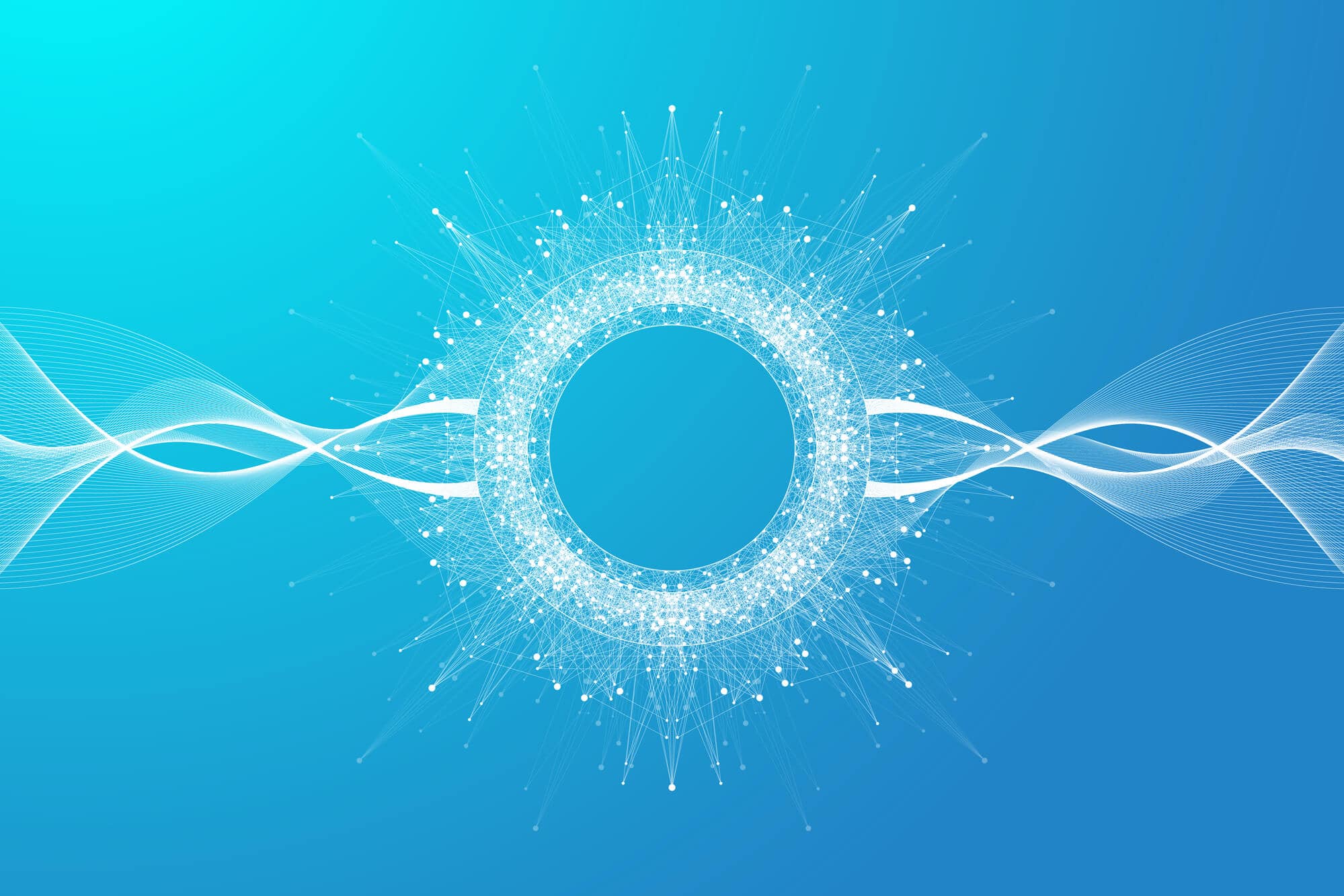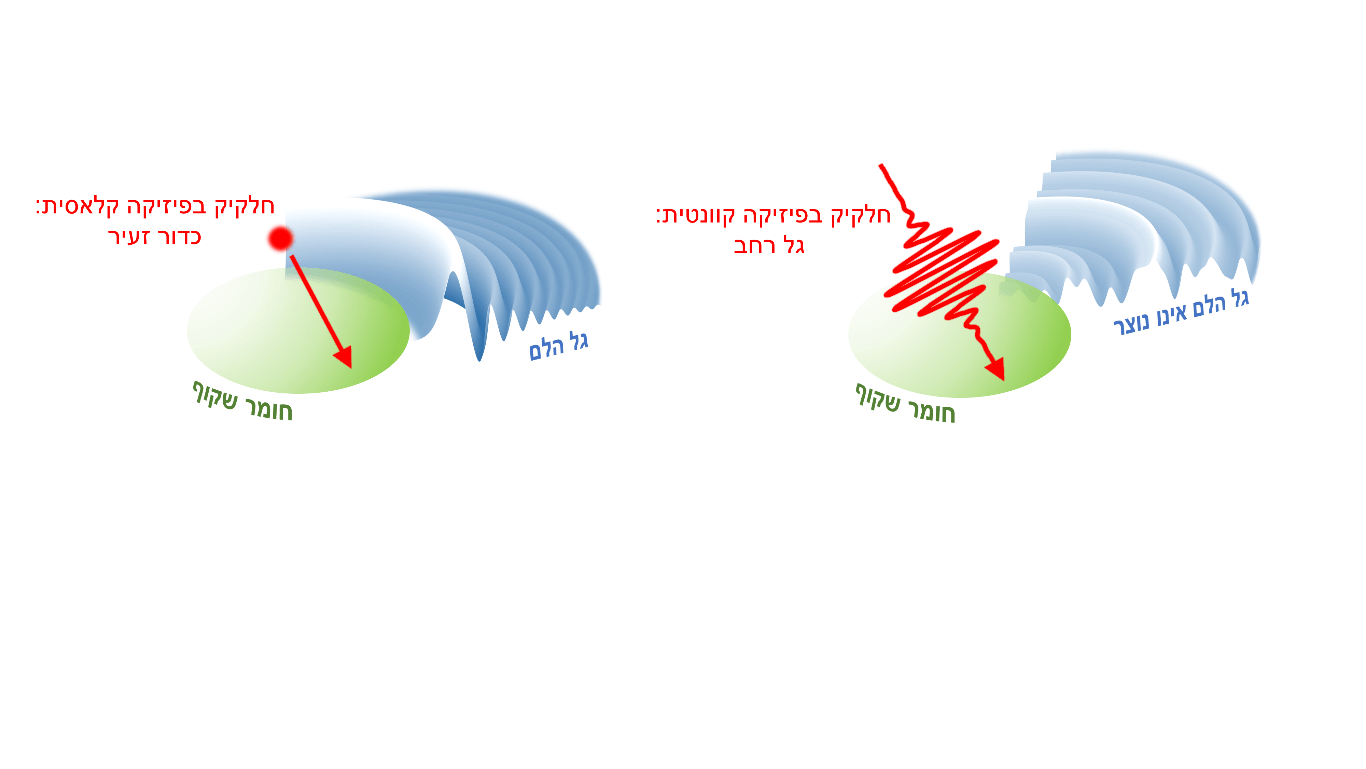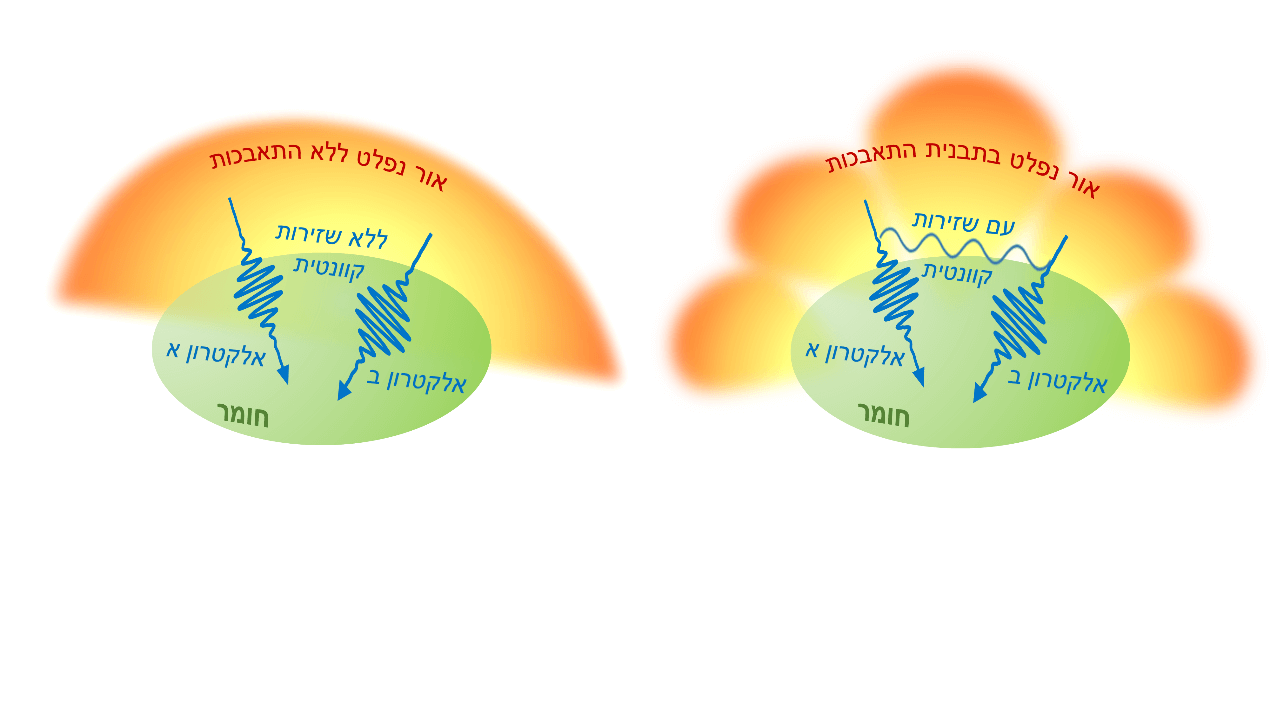Researchers from Tel Aviv University, the Technion and MIT have teamed up to shed new light on quantum theory in a new series of studies

A new series of studies led by researchers from Tel Aviv University, Technion and MIT reveals that the light waves emitted by particles change some of their properties depending on the wave properties of the particles, in other words: quantum theory affects the process of light emission. The research series was conducted under the leadership of Prof. Adi Aryeh, head of the Marco and Lucy Shaul Nanophotonics Chair at Tel Aviv University, and Prof. Ado Kaminer is a faculty member of the Viterbi Faculty of Electrical and Computer Engineering and a member of the Russell Berry Nanotechnology Institute (RBNI). and at the Quantum Center by Helen Diller.
In the series of studies, the researchers showed how light waves change depending on the quantum properties of the particles emitting them, and that the emission of light can be interpreted as the realization of a quantum phenomenon that is completely against our intuition: the collapse of the wave function. The researchers also showed a direct connection between light emission and quantum entanglement - the phenomenon at the heart of quantum encryption and computing technologies.

The researchers explain: imagine that you are observing a wave of water hitting a breakwater with two cracks in it, so that after it two new waves of water emerge from these two cracks. If we look at their shape, we will see places where the waves are higher - and places where the waves have become lower. This phenomenon is called entanglement: the two waves add up together in some places and cancel each other out in other places. Now, imagine that you are watching tennis balls being thrown at a wall with two cracks. It is clear that some balls will go through the first crack and some through the second crack. The spheres will not "add together" or "cancel" each other, as waves do.

In contrast, quantum theory - the physical theory that describes the properties of tiny particles - holds that these particles may sometimes behave as waves. If we perform the "two cracks" experiment with quantum particles, it seems that the quantum particle is capable Go through both cracks in the wall at the same time. In the experiment, we observed an interference pattern consisting of alternating light stripes - evidence of the particles hitting the screen - and dark stripes indicating locations where the particles did not hit. The brightness of the streaks is very similar to the height of the water waves after hitting the breakwater with the two cracks. However, there is a fundamental difference between the water waves and the particle waves of quantum theory. If we look at one of the cracks through which the quantum particle passed, the pattern of stripes on the screen disappear. Our mere observation of the particle's position in one of the cracks will cause it to pass with certainty through the crack we observed: suddenly the quantum particle behaves like the tennis ball. This strange phenomenon is called the "collapse of the wave function".
Despite the enormous progress in our understanding of quantum physics, there may still be apparent contradictions between it and classical physics. For example, in classical physics it is possible to find the trajectory and speed of a particle that emits light, and from this predict the nature of the light emitted from it. On the other hand, in quantum mechanics it is impossible to measure the position and the speed of a quantum particle at the same time (this is Heisenberg's famous uncertainty principle). Also, the quantum particles have wave properties, and they change their properties when we "observe" them (collapse of the wave function).
A series of studies led by researchers from Tel Aviv University, the Technion and MIT showed how these properties of quantum mechanics affect the way particles emit light. The researchers showed that many phenomena related to light emission, which have been explained in the same way for the last 100 years, can behave very differently than expected. This is due to the effect of the quantum nature of the material particles on the light emitted from them.
In their first study from 2019, the researchers tried to measure the interference of light waves emitted from a beam of electrons (quantum subatomic particles charged with an electric charge). The research, which was jointly led by Dr. Rui Ramez and PhD student Aviv Karneali from the laboratories of Prof. Adi Arie from Tel Aviv University and Prof. Ado Kaminer from the Technion, was published in the journal Physical Review Letters. Dr. Sivan Trachtenberg-Mills, M.Sc. Niv Shapira and Dr. Yossi Leria from Tel Aviv University also participated in the study. In the same study, the researchers showed that the interference of the emitted light Is not obtained experimentally. When they used quantum theory to describe the results of the experiment, they discovered that the theory predicts an effect very similar to the "collapse of the wave function". At the moment of light emission, the wave function of the electron "collapses" to a certain point in space, as if someone had observed the electron at this exact location. Therefore, the emission of light no longer occurs from several points at the same time, and the interference of the light waves disappears.

A follow-up study recently published in the prestigious journal Science Advances Showed that the ability of light waves to interfere in time, which is responsible for the creation of short and strong light waves (pulses), can also disappear due to Heisenberg's uncertainty principle. The new research was conducted under the leadership of doctoral student Aviv Karneali from the laboratories of Prof. Aryeh and Prof. Kaminer and in collaboration with doctoral student Nicholas Rivera from MIT in the USA. The researchers theoretically demonstrated the The disappearance of the interference of light through another effect, called Cherenkov radiation. It is customary to explain Cherenkov radiation by analogy with a jet plane that overtakes the speed of sound and creates a "supersonic boom" also known as a shock wave. Similarly, in the Cherenkov effect, a particle bypassing the speed of light in a transparent material is supposed to create a shock wave - a "super-light boom". The researchers' new discovery is surprising because it turns out to be a Cherenkov lie Not at all shock wave, as scientists have thought since the discovery of the effect in 1934. The analogy between the jet plane and the quantum particle is incorrect. Only under special conditions - which depend on the uncertainty properties of the emitting quantum particle - will the radiation be emitted in the form of a shock wave.
Finally, in another recently published study also inPhysical Review Letters, led by doctoral student Aviv Karneali, Prof. Aryeh, Prof. Kaminer and doctoral student Nicholas Rivera, the researchers were able to show that when light is simultaneously emitted from two electrons, the quantum properties of the electrons can have a dramatic effect on the emitted light. For example, when a pair of electrons are "quantum entangled" - having a quantum probabilistic relationship that is at the heart of technologies such as encryption and quantum computing - light waves will be emitted, under appropriate conditions, from the two electrons together and we will receive an interference of light that depends directly on the way in which the two electrons were "entangled" . In this way, the researchers claim, observing the light emitted by entangled particles can give an indication of how entangled they are without directly measuring them: a possibility that could be important for future uses of electrons as carriers of quantum information.
More of the topic in Hayadan:

6 תגובות
Another crook who recycles experiments
and trusts in forgetting the world
Ben Yitzchak did not discover anything
Won't reveal anything..just a chronic recycler...
I recently read in the addendum of Aton Haaretz from 24.9.21/XNUMX/XNUMX about the innovative theory of Prof. Carlo Rubini Atalaki who claims
There are no things in themselves.
There are only relationships between things.
When he meant the relationship between quanta.
I'm not a physicist, of course, but the theory fascinated me for philosophical reasons.
I would very much like one of the excellent scientists mentioned above to write an answer to my question
Is there a connection between their experiments and Carolo Rubini. If so, a meeting between them will perhaps lead to incredible progress in an attempt to connect or match
Between Einstein's theory of relativity and the quantum world.
with gratitude
Light is not an emission of nothing
A wave is not something material
Light is not made of particles, this is absurd
Ridiculous. In short, everything they understand about the universe is based on what they know about light, the problem is that they know nothing about light.
Quantum theory and light? It was news in 1901, seems to me to be one Planck's idea. But the title is just clickbait.
And is it new? In the book called "The Field" which was written by Lynn McCatgart, and was published in 2001 (2006 in Hebrew)
The author tells about the work of connoisseurs, who discovered exactly what is written here in the article.
I have no problem with repeated investigations to check the truth, but it is worth noting who were the first to arrive
to this conclusion.
It says: "Quantum theory affects the process of light emission"
is that so ? Does the Torah have an effect?
a question
As someone who understands nothing about quanta
But with common sense
It's more for me to ask the writers
How can Torah affect a process?